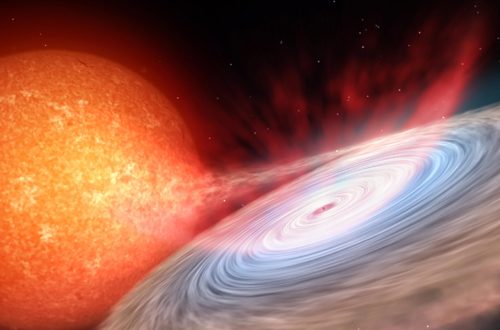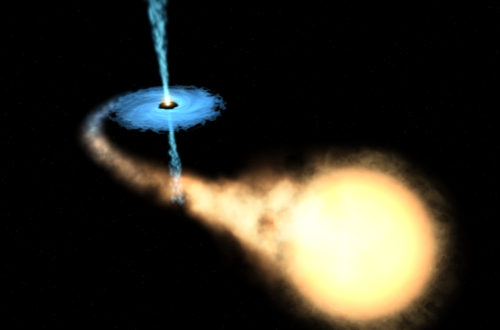Recently, I have been involved in a study looking for potential X-ray binaries in the relatively nearby spiral galaxy M83. And we think we found one!
Here we refer to a microquasar as either a black hloe or neutron star X-ray binary.
This work was led by Prof. Roberto Soria at the University of the Chinese Academy of Sciences, and was accepted for publication last week. Here is a link to the arXiv pre-print version.
Finding a microquasar
Jets from microqusars can produce shock-ionised bubbles as they shoot material out into their surroundings. These bubbles can look like peculiar shaped supernova remnants (SNRs, see Ping’s post for more details on SNRs). Distinguishing between normally expanding SNRs, elongated SNRs caused by jetted supernovae, and shock-ionized microquasar outflow bubbles provides important tests for our theoretical understanding of supernovae and of accretion physics.
In this work we studied nine peculiar supernova remnants in M83 (Figure 1), analysing the observed properties to identify the source as a supernova remnant with an odd morphology, or a microquasar. To do this, we analysed X-ray data from the Chandra X-ray telescope, ultra-violet/optical/infrared data from Hubble and Gemini, and radio data from the Australia Telescope Compact Array.

Eight of the nine
Using the multiwavelength data, we identified six of our nine sources of interest as SNRs, another two we could not categorize due to lack of data, or poor observational constraints.
The ninth source, S2
However, the ninth source, which we refer to as S2 because really it was the second source in our sample, showed an elongated optical structure coincident with two radio counterparts that lay either side of a bright, accretion-powered X-ray source (Figure 2). While these objects may all be a chance alignment, we argue that this would be unlikely, and that the size and luminosity of S2 is suggestive of a single physical structure where we are observing the jets from a powerful X-ray binary.

If S2 is indeed a microquasar, it is one of the rare few extragalactic X-ray binaries we have identified (owing to their typical faintness and small size at such large distances). However, in this case, the brightness and size of S2 would make it similar to the most powerful microquasars that have been detected, either in our own Galaxy (e.g. SS 433 – see Tobi’s post) or in another galaxy (e.g. NGC 7793). These powerful sources are rare but extremely important, providing key insights into super-critical accretion.





